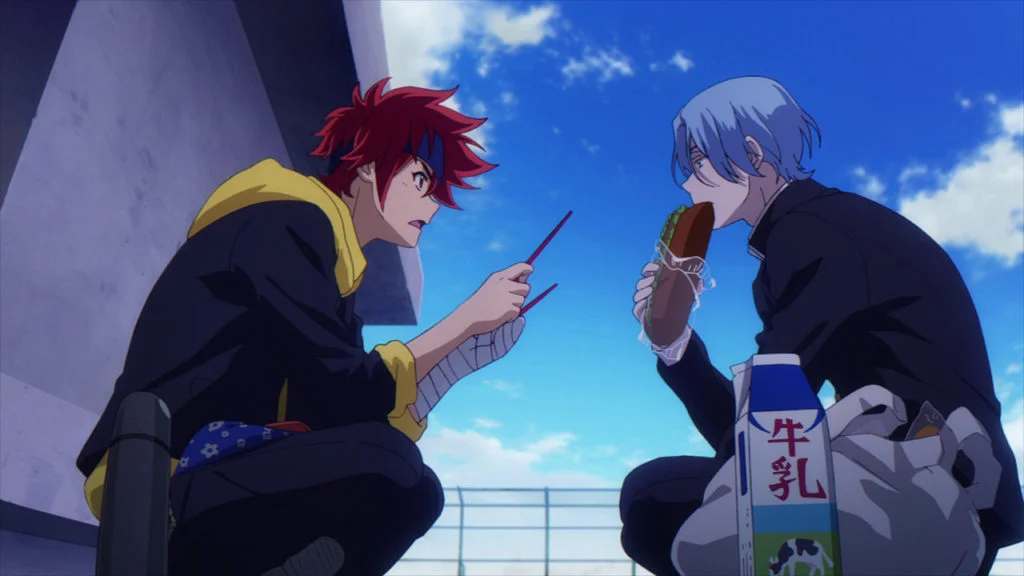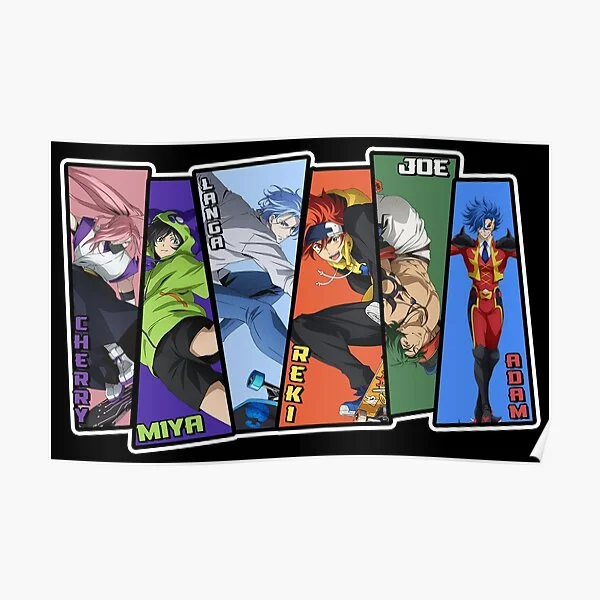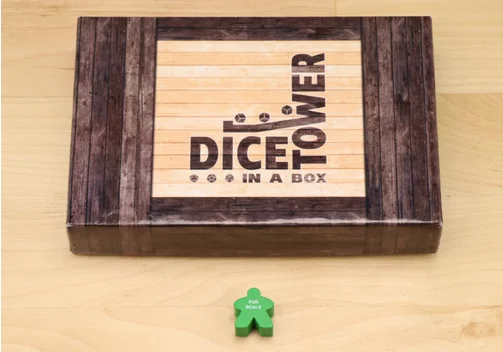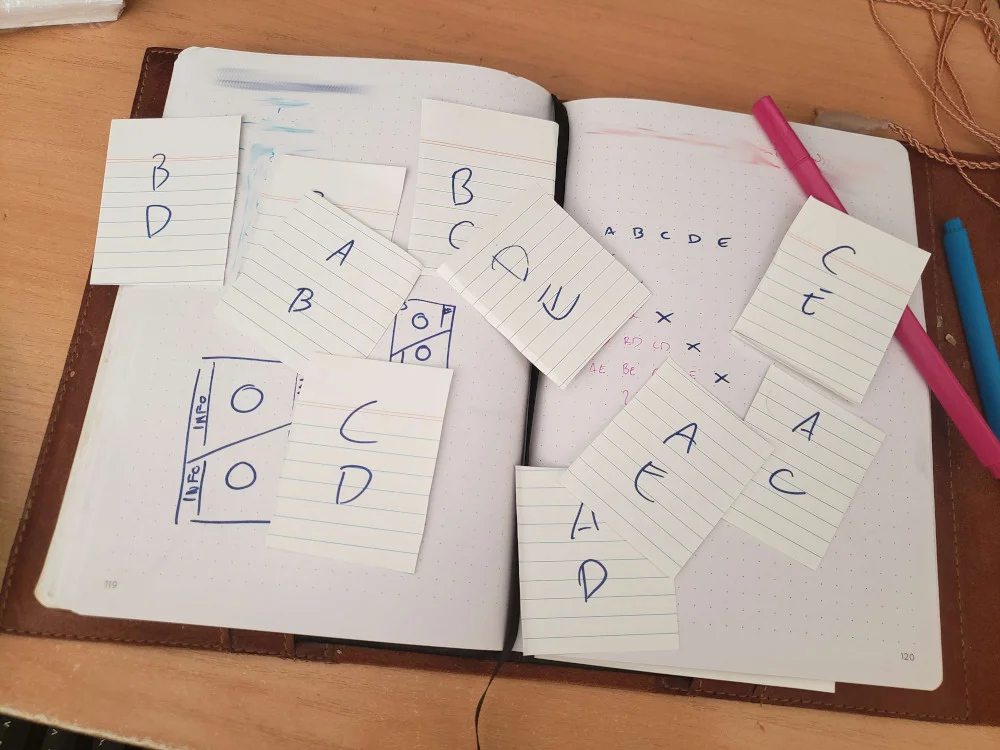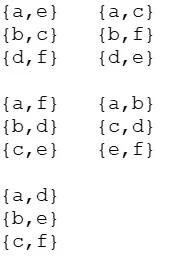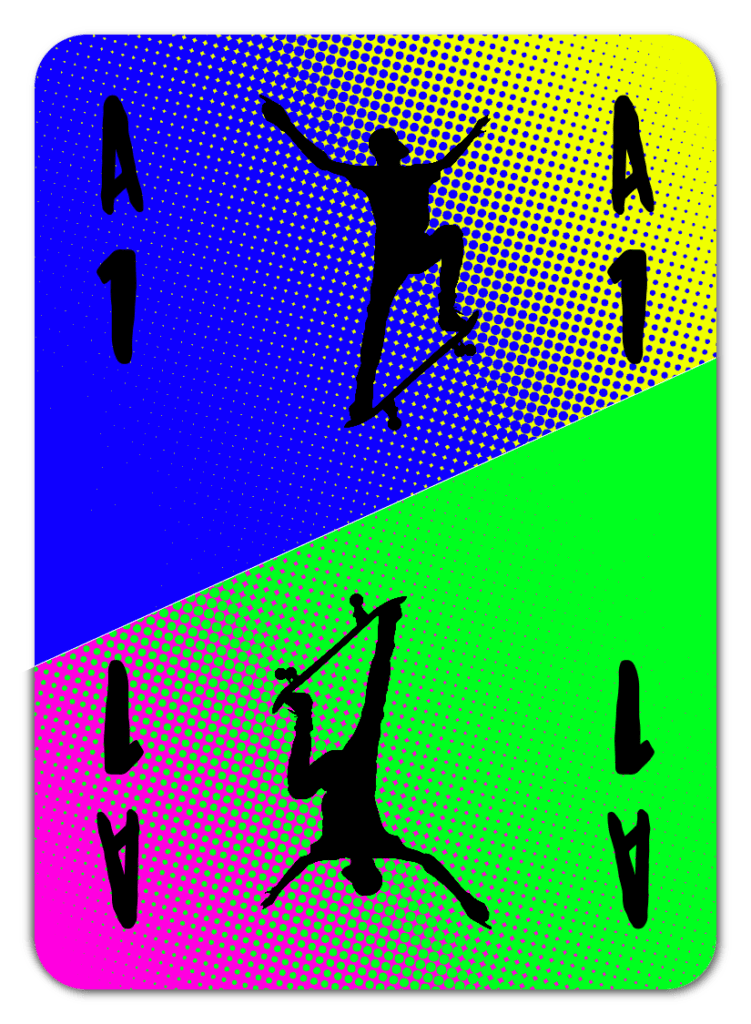Every month of 2022, I am trying, as part of both my PhD project and my all-purpose general game development, develop if not a whole game for game development, a project start, such that I can make playtest prototypes. This is a sort of report of the process throughout the month.
This month I got to the outline stage of designing a trick-taking game which is now firmly at the ‘make a prototype and see how it plays in person.’ And it’s about skateboarders, and I have a challenge now about aesthetic choices.
Starting Out
The first week, I started with the brainstorm post. While I didn’t have art assets I liked a lot for it, I did start thinking on things I wanted to include in the game like a personality card system, and whether the game wanted to be simple and player-agnostic, or specific.
What I mean is, is this a game made up of one deck of cards, you shuffle it up and deal it out to each player? That’s player-agnostic design. When I make a game like this, I like it to sit in the 52-ish card size, something like Die Rich. This is because shuffling that many cards is about as much as I’d like to make anyone do. If the game is much bigger, like Middleware I kind of don’t want to make people shuffle the deck —
I learned that lesson.
If it’s player specific, then each player can have a deck with its own standard form and preferences. That’ll come up as I look at the scale of the game.
The big decision to make here is is this a competitive or cooperative game?
One idea I kind of like is the idea that at the start of the game you get dealt a card that indicates your Skate Crush, and it gives you rules for how you play with the other player of that ilk. Basically, a bit like The Crew, with the cooperative element being about deducing who you have a crush on, and if they’re likely to reciprocate it?
What if it’s about working out some secret rules? Like you gotta work out people’s relationships in the game based on how they play tricks or the kind they’re trying to win?
From here I tried something else different: I developed it further on my Cohost. The text, however, is reproduced here!
gunna formulate this into a proper blog post soon but for now
- Trick taking game
- each round of a trick taker is ‘a trick’ and you want to win tricks
- Is it ‘I’m doing this skateboard trick, now see if you can do it as well’?
- Is there a leader advantage?
- is there a practice advantage?
- How do I make it not bridge
- I want there to be an ‘eat dirt’ card where you can dip out of a trick and it doesn’t work against you
- I want there to be a ‘now kiss’ card where you and the other skatesperson smooch and get out of the trick
- Do I want customised decks?
This whole thing is inspired by sk8 the infinity, so I’m wondering if it’s that each player has a custom deck showing tricks they can try but which has as an added dimension people they have a crush on, showing compatabilities and interest – you can win the game if you successfully commit to a kiss with another player when they have it.
If I do that though I’m going to want each deck to have art of the characters. So hypothetically, let’s say that the game is say, a deck of 20 cards, I don’t want unique art on each card; I want the card backs to represent a different character, so there are different compatibilities for things like the Now Kiss card.
If I did that, with custom decks for each character, i’d make the card back show the character; which means I’d need to find someone who can do art that lands in that venn overlap of ‘anime kissboys and kissgirls’ and ‘pro wrestlers’ and ‘skateboard aesthetics.’
That can be super tricky!
Thinking more about this and one idea I’m headbutting around the room is the notion of the game being cooperative but having hidden information at the start. You’re all trying to encourage each other to do cool tricks and whatnot, but how people do tricks and the rules they stick to indicate things about how they get to relate to one another.
Like you may have a senpai and you may have a crush on them and that means you can’t bring yourself to outpace them if they’re winning the trick, and so on.
Then at the end you play a card that indicates what you think you should be doing with your friends and you all win if you get it right…?
Okay, an idea:
There’s a deck that represents the space you’re playing in; it’s the ‘Field.’ You flip a card off the field, to show what the ‘core’ of this trick is. Everyone’s suit and different tricks care about what kind of field they can be played into. It’s like a trump for the suit – there are some tricks that are best on some types of scenery to play with.
If you want, you can play a trick across the field – like the previous and next, so you can play two cards into the trick, and that sets to everyone else ‘hey, you need to chain too,’ as a way to dump your hand and also use that to get rid of low-value cards.
But one of the fields is EMOTIONAL HONESTY and the trump for that is kissing someone.
Been thinking about how I think this game ‘feels right’ and it seems to me that it should come in a box that looks like, well, a skateboard proportion. The 120 card tucks appealed to me more in the past but when dealing with a multi-deck game I feel like this kind of pro box is more appealing for setup.
At this point the vibe I’m leaning towards is that everyone has a deck of maybe twenty cards, with mostly standardised sets inside it, and then there’s a central deck that represents the ‘field’.
Player count comes up here. In the simplest terms, if it’s 20 cards/character, and this box can hold 128 cards – say, 120 with a rulebook – then it gives room for 6 ‘character’ blocks. If we set aside one for ‘the field’ and say instead we have 5 characters, that means the game can play 3-5 players.
I don’t want the field to count equal a player’s deck; it’s not a briscola, it shouldn’t be the trump every round. Rather, instead, I want it to be that you have a smaller number of field cards and only some of them show up each game. If I wind that down to say, 10 cards, then the remaining 110 get split between 5 people, that gives 2 more cards to each player.
Another idea i’m liking is that each card is double-headed; you can play them ‘top’ or ‘bottom’ which means there’s some tricks you can’t do too much. This expand the way the decks can be personalised (a character may have their A and B tricks on the same card, meaning that they can ‘run out’ of one or the other, while another character may have A and B on different tricks).
More work on this. Thinking about how you can arrange things so that each character has their two particular tricks split, and seeing if each could be unique – like, they all have unique pairings. Doesn’t work at 5 the way I want, will keep dorking with it.
euahg I did combinatorics
So if there are six tricks, each character can have a unique deck of cards made up of cards that each represent TWO tricks but never the SAME two. If your deck is 22 cards, that means each player can have a deck of 3 cards of 6, with 4 extras – those can be our NOW KISS or EAT SHIT cards.
This works out really nicely; 5 22 card decks, 10 field cards, and a booklet. I can even pare it down to say, 20 cards per character, 10 field cards, booklet, and room for a card or counter.
So obviously one thing that is really cool about Bridge (yeah everything’s cool about Bridge) is that the deck sorts it so there are no ties; by definition, all the playing pieces are ranked. But in this case, if you’re all using your own decks, then ties are possible.
That’s what the field opens up; you can make it so your best in a field (the trick leader) can have riders that win ties. If two players play identical pieces in a field, the extra field pieces present more room to break the tie.
If first played wins ties, then second players have no reason to play identically into a trick if they can help it.
If last wins ties, then leading the trick super strong can be a risky maneuver and create more tension when leading, which encourages you to try and lead in all the fields.
This is all standin art of course, but the basic idea. Icon in the centre showing compatibility, letters to indicate suit, number to indicate power.
I am not good at this aesthetic.
